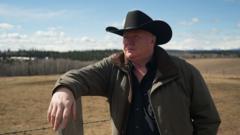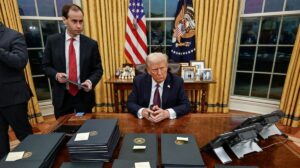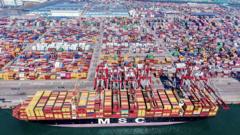In a time of significant upheaval, voters experience a surprisingly uneventful election campaign.
**Canada's Election: A Predictable Campaign Amidst Turmoil**

**Canada's Election: A Predictable Campaign Amidst Turmoil**
The Canadian political landscape reflects stability yet offers little excitement as the election nears its conclusion.
Despite the backdrop of economic disruptions and tensions with the United States, Canada's electoral contest heading into Monday appears to be devoid of memorable moments or dramatic clashes reminiscent of past elections. Pollster David Coletto commented on the apparent absence of excitement, stating, “As much as this election has been interesting, not a lot has happened during the election.”
Markedly, the tensions arising from President Trump's trade war with Canada have not created the expected campaign drama. Instead, the election is shaped as a predictable face-off between Prime Minister Mark Carney's Liberals and Pierre Poilievre's Conservatives, mirroring a clear binary choice that has left little to no room for competing parties to gain visibility.
Looking back, previous elections such as the stirring debates of 1984 and the remarkable Orange Wave of 2011 highlighted the potential for dramatic shifts in Canadian politics. However, the current campaign has seen all other parties relegated to the sidelines, underscoring an unusual sense of normalcy. As the polls tighten in the lead-up to election day, it remains to be seen whether the winds of change can still gather speed in a system that feels stagnant.
In essence, while the political environment is fraught with economic challenges and international tensions, it is the predictability of this election cycle that has captured attention, signaling a curious blend of stability against a backdrop of historical volatility.
Markedly, the tensions arising from President Trump's trade war with Canada have not created the expected campaign drama. Instead, the election is shaped as a predictable face-off between Prime Minister Mark Carney's Liberals and Pierre Poilievre's Conservatives, mirroring a clear binary choice that has left little to no room for competing parties to gain visibility.
Looking back, previous elections such as the stirring debates of 1984 and the remarkable Orange Wave of 2011 highlighted the potential for dramatic shifts in Canadian politics. However, the current campaign has seen all other parties relegated to the sidelines, underscoring an unusual sense of normalcy. As the polls tighten in the lead-up to election day, it remains to be seen whether the winds of change can still gather speed in a system that feels stagnant.
In essence, while the political environment is fraught with economic challenges and international tensions, it is the predictability of this election cycle that has captured attention, signaling a curious blend of stability against a backdrop of historical volatility.





















